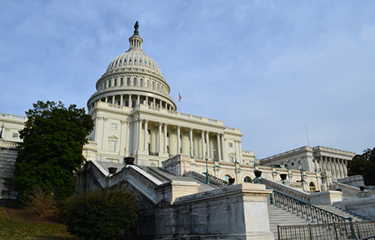The annual agriculture spending bill, now being formulated in the U.S. Senate includes several important seafood-related provisions, including funding for aquaculture research, increasing seafood consumption in schools, and improving inspections on imports.
This is the first time the Senate has produced a markup of the agriculture funding legislation in two years, in place of omnibus spending bills that have been passed without significant committee and subcommittee input. The traditional budget process allows lawmakers to give more granular guidance on how agencies will spend their money and what programs they pursue.
The Senate Appropriations Committee unanimously approved the USD 26 billion (EUR 24 billion) draft legislation on Thursday, 22 June. Next, it will have to be approved by the full Senate before being reconciled with the version making its way through the U.S. House. The House Appropriations Committee approved its take on the annual spending bill earlier this month with approximately USD 1 billion (EUR 916 million) less in spending.
Both the House and Senate versions of the bill include funding for land-based aquaculture and recirculating aquaculture systems (RAS) development. The Senate report calls for maintaining 2023 spending levels, while the House report includes small increases: USD 1 million (EUR 916,000) for precision aquaculture efforts, USD 1 million for sustainable aquaculture efforts, and USD 500,000 (EUR 458,000) for RAS R&D.
The Senate committee shaped its legislation to approve the U.S. Department of Agriculture continued research into aquaculture issues including disease, genetics, systems, and economics. It also supports the establishlishment of domestic shrimp-farming programs, fostering domestic fish seedstock production, and developing fishmeal products from woody biomass.
The bill would also require the FDA to update its seafood consumption suggestions for pregnant women and young children by 24 September, 2024. The FDA currently is leading a government-wide effort to update that advice. Last year, the agency commissioned an independent study from the National Academies of Sciences, Engineering, and Medicine (NASEM) on the role of seafood in child development as part of the FDA’s Closer to Zero Action Plan to reduce the exposure of babies and young children to mercury, arsenic, lead, and cadmium. That study was projected to be completed within 18 months, possibly after the new deadline in the Senate’s bill. The FDA is also commissioning a survey on mercury levels in seafood.
U.S. senators Jack Reed (D-Rhode Island), Lisa Murkowski (R-Alaska), Susan Collins (R-Maine), and Jeff Merkley (D-Oregon) inserted language into the report requiring USDA to develop a plan to address issues with seafood consumption in schools. Last year, the U.S. Government Accountability Office – a congressional watchdog service – released a report suggesting that the USDA could increase the amount of seafood being provided through the National School Lunch Program. According to the report, seafood makes up just 1 to 2 percent of the animal proteins the department purchased for the program from fiscal 2014 through 2019, and the average student consumed only 3 ounces of seafood per year via the program. According to federal guidelines, school-age children should consume 4 to 10 ounces per week.
The senators also took issue with plant-based seafood alternatives, directing the FDA to provide clarity on the use of seafood terminology for those products to avoid confusion by consumers. Lawmakers want the FDA to take the same approach it did for plant-based milk alternatives. The House version includes an identical provision.
Photo courtesy of Shutterstock / Nature's Charm







